Latest News
Kitchen Chat and more…
Kitchen Chat and more…
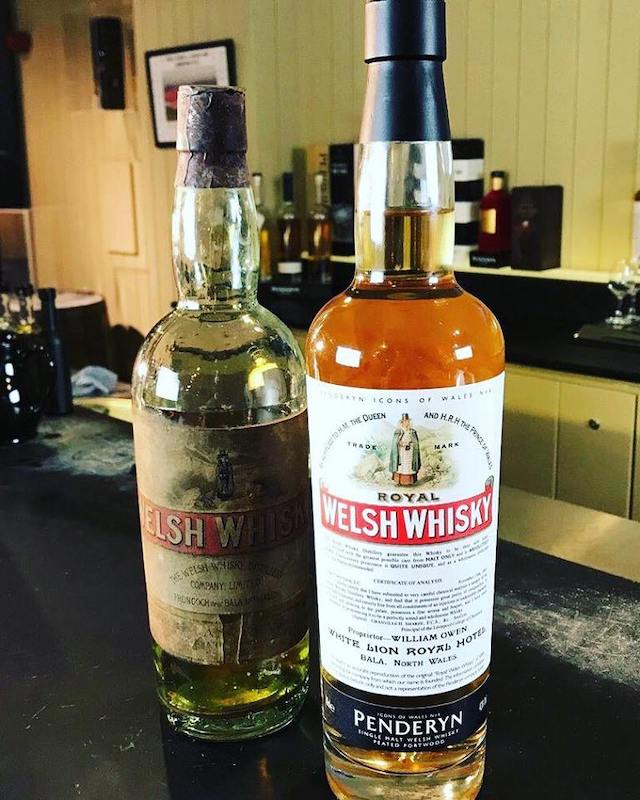
The Royal Welsh Whiskies – Picture from Penderyn Distillery
Wales is not high on the whisky map. It is well-known as an industrial country with coal mines, and gold. Whisky was never one of their “virtues”. Many people did not even know where Wales is or that it exists.
Wales has a short whisky history. The current distilleries are Penderyn Distillery, located in the Brecon Beacons in Southern Wales, and Dà Mhìle Distillery in Western Wales. Penderyn is the only distillery exporting its Welsh whiskies outside of UK, to countries such as the United States, Germany, France and Singapore.
Unknown to many, Wales was home to a whisky distillery about one century ago. Known as Frongoch Distillery, its location was about two and a half miles from Bala on the way to Trawsfynydd. R. Lloyd Price, the owner of the Rhiwlas Estate and Robert Willis, a pretty unknown person, registered the Welsh Whisky Distillery Co in Frongoch, Bala, in 1889 and built the Frongoch Distillery.
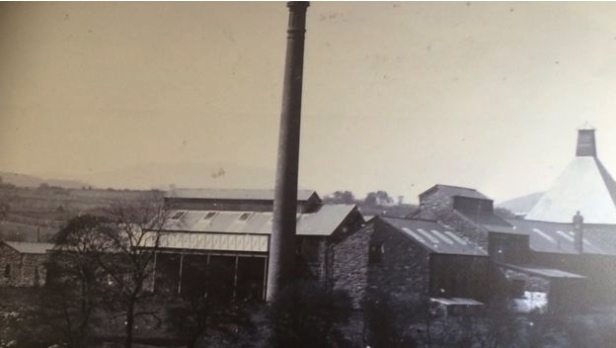
An Old Picture of Frongoch Distillery. Picture from BBC.
Frongoch was the perfect site for the distillery due to two crucial things – the pure, peaty water from the Tryweryn River, and the readily available transportation network via the nearby railway station and ports. The first Welsh distillery was a magnificent building in its heydays as it received fundings of £100,000 to build and run it. When it opened its doors in 1890, it was a beautiful place with a malthouse, kilns, peat store, offices and accommodation for its 30 workers. There was also a dedicated excise officer located on site.
Sadly, the distillery did not survive. The company went bankrupt in 1910 and Frongoch Distillery became an empty shell. The premise remained uninhabited until the outbreak of World War One in 1914. During the war, the distillery and its grounds became a prisoner of war camp for captured Germans and Irish.
In 1916, during the Easter Rising in Ireland, the English army detained some of the most prominent figures of the uprising at Frongoch. There were two camps on the premises, the North and South camps. The South Camp was in the old buildings of the distillery. The prisoners included Terence MacSweeney and Michael Collins. Frongoch Distillery in Wales remains a vital link in the history of Ireland even up to today. As a prison during the war, it held the best of Ireland’s revolutionaries for the freedom of Ireland.
It was said that full production at Frongoch would reach 150,000 gallons per annum when the distillery opened. The first Welsh whisky went to customers in 1891. All of them went to North Wales and the border counties. The owners changed their policy after the first batch, choosing to increase the years of maturation. This was a time before rules and regulations came into the whisky industry; such a move from the owners showed their passion and dedication to the craft of whisky-making.
Interestingly, the Welsh Whisky Company Co. received a royal warrant from the Queen on 26 July 1895. As a result, the prefix “Royal” could be used in front of the whisky. Hence, the Royal Welsh Whisky was born. Shortly after the receipt of the royal warrant, the market released the first Royal Welsh Whisky in the history of Wales.

Advertisement of the Royal Welsh Whisky. Picture from WhiskyInvestDirect
Details about the flavours and taste of the whisky did not survive the years, unfortunately. Advertisements such as the above picture tell us that the distillery released the whisky as a five years old malt made from the finest malted barley, but there was nothing that spoke of its flavours or taste.
Based on the location of Frongoch, the ample peat available likely meant that the whisky was peated. It was also comparatively more expensive than the typical Scotch whiskies of the time. The old report of the Wine & Spirits Trade Record also pointed to the fact that the Royal Welsh Whisky might have been more similar in style to their Irish counterpart than Scotch in terms of their choice of using a “Pot Still” and selling the whisky both in bulk and in bottles. Sadly, there were no concrete details to find out more.
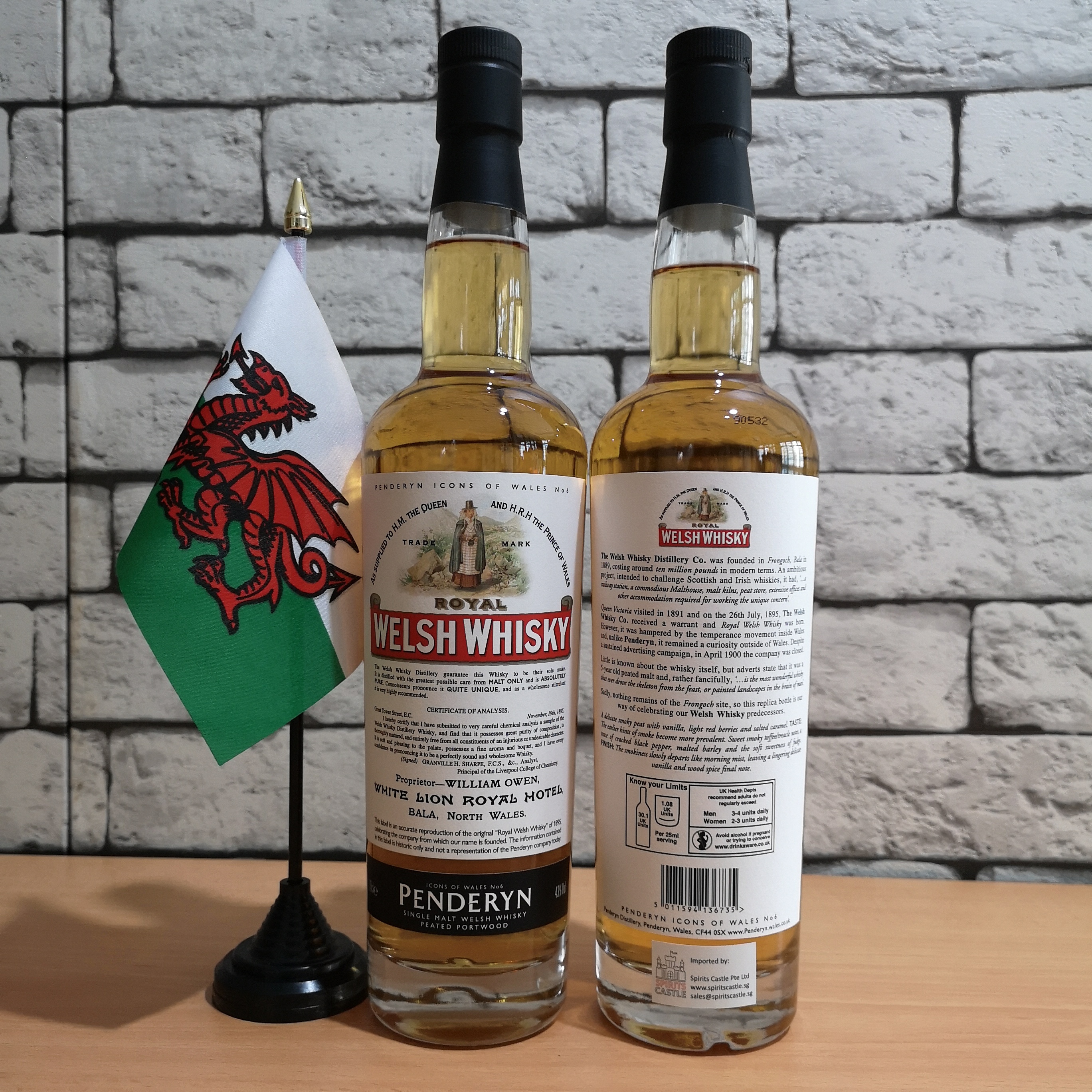
The Royal Welsh Whisky of Penderyn. Picture from Spirits Castle
Fast forward to the modern era, and we have Penderyn Distillery as a successor. As the first Welsh distillery to export its whiskies outside of the United Kingdom, the distillery owns one of the original Royal Welsh Whisky bottle (picture at the top of the article). There are three other surviving bottles. One of them is a resident at Cardiff’s St Fagans National History Museum. The other two belong to private collectors who bought them in an auction at £7,300 and £7,200 respectively in 2016.
In 2019, Penderyn Distillery decided to honour the history of whisky-making in Wales with the release of their version of the Royal Welsh Whisky. It is part of Penderyn’s Icon of Wales series and released in March 2019 to celebrate St David’s Day. The new Royal Welsh Whisky sports a peated Portwood finish.
We wonder if the distillery opened the original bottle to try before deciding on the flavours, although it would be very much like drinking a historical relic. Nonetheless, we are excited to try the newly-minted “Royal Welsh Whisky” from Penderyn Distillery.
Nose: Guava, melons, pineapples surface with black pepper in the nose, with a very muted peat note at the back. With time, vanilla surfaces with soft peat.
Palate: Tropical fruits, muted peat and hints of smoke at the forefront. With time, vanilla cream, peat and smoke come together in a harmonious and beautiful expression.
Finish: Oaky with sweet fruits that develops into fruit peels. With time, the finish is long, and wisps of smoke come and go elegantly.
The Royal Welsh Whisky will benefit from patience and airing time. The dram evolves over time, with the characteristic of its Portwood finish disappearing after 30 minutes and the Peated finish comes full power. It is a beautiful dram that changes with time, giving you a surprise at every turn.
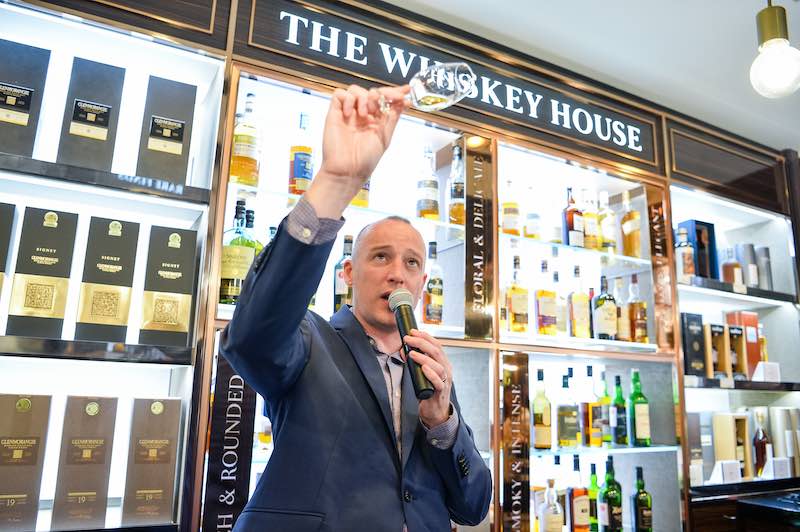
Brendan McCarron, Head of Maturing Whisky Stocks at The Glenmorangie Company
WhiskyGeeks is fortunate to get a chance to speak with Brendan McCarron, the Head of Maturing Whisky Stocks at the Glenmorangie Company, during our DFS event. As the heir apparent to whisky legend, Dr Bill Lumsen, Brendan has plenty to work on. He joins the company five years ago and started work with the whisky creation team alongside Dr Bill.
Brendan hails from Glasgow, Scotland. As a chemical engineering graduate, he started his career in the whisky industry in 2006 when he joined Diageo. After three years, Brendan began work as the distillery manager at Oban. Two years later, he left for “Peatland” – Islay, where he worked with Lagavulin, Caol Ila and of course, Port Ellen.
Port Ellen is a malting facility where Brendan got to work with the maltsers on different requirements. Making smoky malted barley was probably one of his favourite thing to do! The smoky malted barley was also the reason that Brendan got to know Dr Bill Lumsen. After ten years of working as a distillery manager, Brendan decided to change his direction and joined The Glenmorangie Company as part of their whisky creation team.
Brendan has a fantastic whisky journey from the day he joined the industry in 2006. He is probably one of the very few people in Scotland who has worked on all aspects of whisky making. From designing a brand-new distillery (building it!) to malting, distilling and maturing whisky, Brendan has done it all. These experiences at the various distilleries and malting houses have shaped Brendan’s knowledge and expertise along the way. Additionally, he also went out of his way to acquire theoretical knowledge through his pursuit of books, courses and degrees. All of these add to his practical experience and give him a well-rounded education in whisky making.
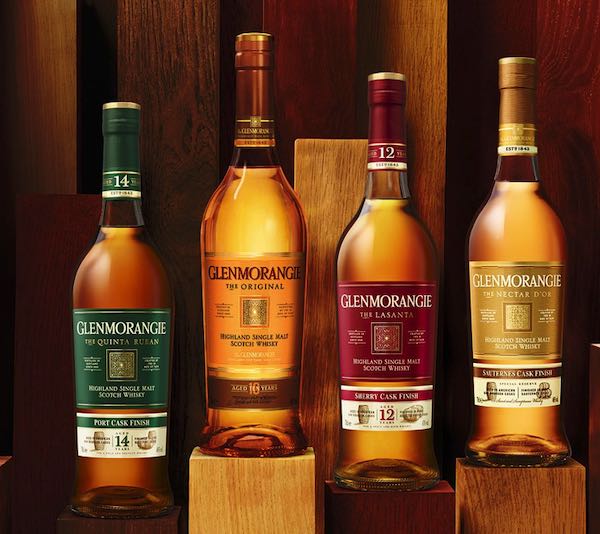
Glenmorangie Whiskies (Picture Credit: Glenmorangie.com)
We had a short chat with Brendan on the different exciting whiskies that are coming shortly. We understood that there is a 25-year-old whisky released, but so far, we have yet to see it land in Singapore. It may be soon, but we do not know when.
The exciting part of the chat is, of course, the single cask #1399, that we tasted during the DFS tie-up event that we did on 22 June 2019. It is part of their latest project to launch exclusive single casks for specific countries. Making its debut as a travel retail exclusive bottle is naturally the best way for a brand to market a rare single cask bottling in Singapore considering the sheer volume of people passing through our airport!
Wood has always been the talk for Glenmorangie. We know that they used exceptional “designer” oak casks for some of their limited edition whiskies. We asked Brendan about these casks.
The creative team at the distillery involves itself in the creation of the oak casks from the start. Their research led them to the Ozark Mountains of Missouri, USA, where they found slow-growing wood that suits the spirit of Glenmorangie. To bring the effects of the slow-growth wood further, the team discovered the trees in the Mark Twain National Forest, where the oak trees grow slowly and develop the porous nature that the Glenmorangie team needs for its whiskies.

An Oak Cask (Photo Credit: Glenmorangie.com)
The entire process of making these oak casks started with the identification of specific trees within the Mark Twain National Forest. These trees are cut and then air-dried for two years for maximum effects. Air-drying not only reduces astringency and improves the wood’s permeability; it also enhances the soft and rich flavours of the Glenmorangie whiskies.
These tight-grained but porous wood are then made into casks. The casks will be heavily toasted and then lighted charred for the distillery’s needs. The cooperage then fills bourbon whisky in the casks for precisely four years. It is like clockwork. Once four years is up, the casks are ready for shipment to the Scottish Highlands. The whole process takes six years to complete. Such dedication to oak casks is impressive, and we salute the team for going through with this process.
Some of the designer wood casks hold the core range of the whiskies from Glenmorangie; others hold limited edition whiskies. One of the famous limited edition is the Glenmorangie Astar. Our team got the chance to taste the Astar at another event held at The Exciseman on 1st July, where Brendan gave a presentation to both trade and consumer alike. We will speak of that another time.
Due to the higher porosity of the cask, the whisky soaks better into the wood, extracting flavours that the distillery is after. The distillery also uses these designer casks only twice for maturation purposes. Brendan explained that the casks are no longer suitable after two uses, and they usually sell the majority of these casks. Some get left behind for experiments, and a small number of them go to Ardbeg.
We asked Brendan some essential financial questions as well, that affects production. In the past, some distilleries broke up the ex-bourbon barrels they bought and flat pack them before shipping to Scotland. Once the vessel landed, the distilleries brought the staves to a cooperage and rebuilt the casks. The practice affected the quality of the casks, and the whiskies matured in such casks become a debatable topic.
According to Brendan, this practice is hardly used in Scotland’s distilleries today. The discovery that they do not save cost by doing so was one of the significant factors. However, the debate on the practice that MAY have affected production was probably the main factor that led to the abolishment.
The abolishment, unfortunately, led to a reduction of hogshead as most hogsheads are rebuilt from standard barrels. While this is a loss to the whisky industry, we must remember that cost is always a factor for end-consumers because higher cost equates to higher prices!
Some distilleries are making use of virgin oak casks to mature some of their whiskies. We even know of new distilleries that make use of virgin oak maturation to reduce the number of years needed to produce delicious whisky. Glenmorangie uses virgin oak casks as well, and we wanted to know what Brendan thinks about them. He thinks, that virgin oak casks may prove to be too strong an influence on Glenmorangie’s new make spirits. The virgin oak casks may hide the fruity notes of Glenmorangie and make it “un-Glenmorangie”. Brendan prefers to do finishes with virgin oak casks instead.
It is of interest to know that Glenmorangie does a lot of wood finishes to bring flavours to their whiskies. For example, the distillery finished the Lasanta in Oloroso and PX sherry cask, the Quinta Ruban in Ruby Port Pipes and the Nectar D’òr in Sauternes casks.
Brendan explained that they do not know all the elements of influences when the creative team chooses the cask finishes. They know for a fact that the spirit of Glenmorangie works well with Port and Sauternes casks finishes. Unfortunately, they do not know the reaction to all the casks in the world. Therefore, it is much of a trial and error for the team when they are choosing the cask finishes. By selecting items of interest which the team thinks would work with the spirit, they came up with various experiments of different finishing casks. The availability of the casks is also crucial, as they need enough casks to complete a new finishing experiment.
Brendan mentioned that the team also takes the opportunity when it comes knocking. If their suppliers offer casks which they have not tried before, they may take a few of the casks to create new experiments. Some experiments will succeed while others may not. Part of the fun is finding out if it works. For those of you who are curious, the casks that don’t work are not thrown away! The team reracks the “unworkable” casks into sherry or ex-bourbon casks to “reset” them. Usually, the age of the whisky will also help to rectify any issues that the team finds.
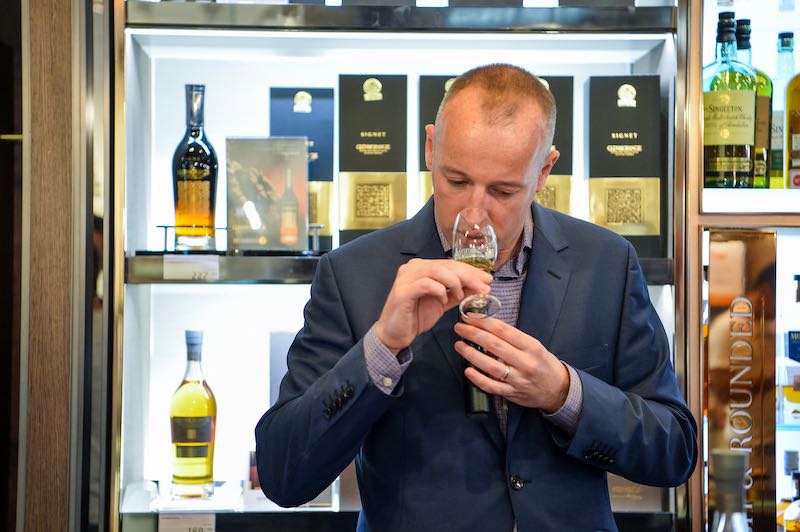
Brendan, the whisky expert
We thought that we have enough technical talk, so we asked Brendan what the one thing that he would like the whisky community to know is. The answer is not surprising. Brendan wants everyone to know that a single malt whisky comes from a SINGLE whisky distillery. It is one of the most misunderstood terms in the whisky industry. Many whisky drinkers confused single malt whisky and single cask whisky. Brendan shares his frustrations at how he always get that same question – “How is the whisky still a single malt whisky when you blend all these casks to create it?”
To set the record straight, Brendan shares that a single malt whisky can be a “blend” of 15 casks from the SAME distillery. As long as the whisky is made from malted barley and is not blended with whisky from another distillery, it is a single malt whisky.
Most of our younger folks here would probably be keen to work for a whisky distillery. We ask Brendan what we need to do if we want to work for a distillery. Here is his advice.
Get a science-related degree if you want to be on the distilling team. Chemical engineering or chemistry is a good start. Otherwise, biochemistry is helpful too. There are, however, many ways to get involved. You can still work in the industry even if you have a business degree. You can join the distillery in sales or marketing with it. Nonetheless, you will still need the passion and love for whisky before you can comfortably stay in the industry.
Do not despair if you do not have any of those. Brendan said that having experience is equally vital if you are not Scottish and want to work in Scotland. He started in pharmaceutical and the knowledge he gained there translated into his next job with Diageo. Working in a brewery also helps because that involves two stages of the whisky distillation. Ultimately, the potential candidate needs to be open and adaptable. When you combine the passion for whisky and your openness to adapt, you will be able to make headway into the career that you want. Start with a job that you can do and learn from there. You will never know where that will take you!
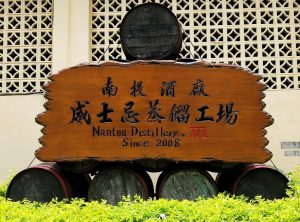
Nantou distillery has been making Omar, a Taiwanese whisky, since 2008. The distillery tours there are quite like those of Scotland. The tour guide makes the experience more intimate, more personalised and less commercial. Nantou distillery’s willingness to experiment makes them unique, especially to whisky geeks like myself! I know many of you are more interested in the whisky; so I will leave the technical production details to later in the article!
Nantou winery makes different fruit wines and liqueurs which can be used to season casks for unique cask finishes. Omar whisky has released whisky finished in casks of Lychee Liqueur, Plum liqueur, Black-Queen Wine and Orange liqueur.
Batch 4 Lychee Liqueur Cask Finish
This Lychee liqueur finish has a balanced Lychee note that does not overpower the whisky. I enjoyed the tropical fruit notes of pineapple and mango alongside notes of pear drops!
Batch 1 Orange Liqueur Cask Finish
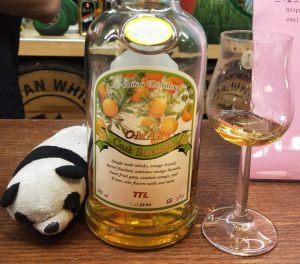
This dram is for the orange lover with notes of orange puree, orange zest, and orange flower water alongside some lovely notes of vanilla and honey from its prior maturation.
I am particularly fond of their bourbon cask strength, both peated and unpeated! But do not fret about the age statements. Due to a higher average temperature, maturation speeds are a lot faster than Scotland. A 3-year-old whisky at Nantou would taste similar to an 8 to 12-year-old whisky matured in Scotland. The 8-year-old cask strength is a special release; it feels like a 15-20-year-old scotch.
Omar 8yo 2009 Cask Strength
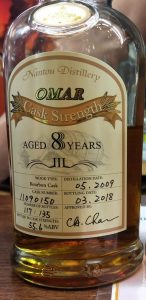
This 8yo is very soft and demure, giving notes of old oak, vanilla, pears and mandarin oranges!
Omar 3yo 2014 Peated Cask Strength
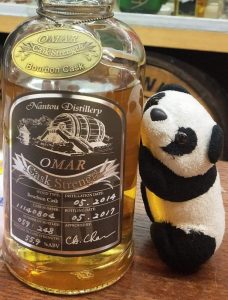
The 3-year-old peated cask strength displayed a high calibre of maturation, with the right balance of peat smoke. Water will draw out more smoke for people who love that note! This delicious yet affordable single cask would be good smoky daily dram!
Omar 10yo 2008 PX Sherry Cask
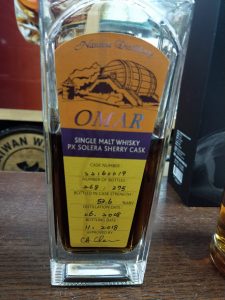
For sherry bomb lovers, this is an absolute sherry nuke or WMD! This is the result of 8 years in sherry hogshead before finishing in a PX cask for two years. This dram holds notes of Christmas cake, cinnamon, chocolate, plums and dried fruit!
TTL buys barley in bulk from multiple maltsters. Most of the unpeated barley is from maltsters in England, while most of the peated barley at 35ppm is from maltsters based in Scotland. The moisture content is also similar to specifications required in Scottish distilleries, around 4%.
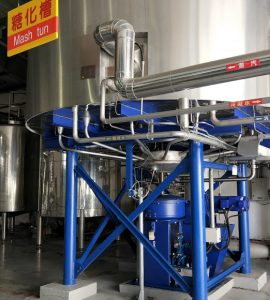
The barley is milled into grist with the standard ratio of 70% grist, 20% barley husk and 10% flour. Distilleries maintain specific ratios to assist in the filtration of wort and to prevent choking in the pipes. The grist is sent to a German semi-lauter mash tun with a charge of 120000L. Hot water is added three times; the first and second streams form the wort. The third stream, called the sparge, picks up the remaining sugars, but it is low in sugar. The sparge is not mixed with the first 2 streams, but to maximise sugar recovery. This is done by reusing the sparge for the first stream to be added to the next batch of grist.
The wort goes into one of the stainless steel washbacks to undergo fermentation, turning it into a strong beer called wash. In this stage, the yeast will start eating the sugar in the wort and produce carbon dioxide and alcohol. For Omar whisky, this fermentation process takes an average of 72 hours using French distiller’s yeast. This is slightly longer than the 48 hours of fermentation in most modern Scottish distilleries. The wash from Omar is around 7-8% alcohol by volume (abv).
Pot stills
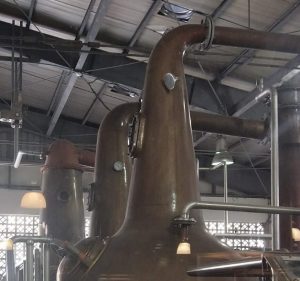 The wash goes into one of 2 wash stills to be distilled into low wines. This distillation removes the barley solids leaving mostly ethanol, water and aromatic compounds. The low wines are pipped into the spirit still for its second distillation to reduce water content. Nantou Distillery currently has 2 Wash Stills and 2 Spirit Stills. One spirit still is different, as it, strangely enough, has a window. The stills are of varying sizes, one at 7000L, two at 5000L and the last one at 2000L.
The wash goes into one of 2 wash stills to be distilled into low wines. This distillation removes the barley solids leaving mostly ethanol, water and aromatic compounds. The low wines are pipped into the spirit still for its second distillation to reduce water content. Nantou Distillery currently has 2 Wash Stills and 2 Spirit Stills. One spirit still is different, as it, strangely enough, has a window. The stills are of varying sizes, one at 7000L, two at 5000L and the last one at 2000L.
Cut of the Heart
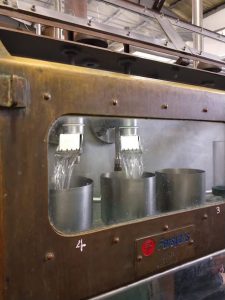
There are three components in the spirit still distillate. The head comes first at a high abv, followed by the heart, which is what goes into the barrels, and lastly comes the tail which has a lower abv. The cut of the heart affects the new make spirit and how the whisky tastes. If the cut starts at a higher abv, the new make spirit gets lighter, fruity notes, but also more undesirable flavours from the heads. If the cut ends too low, it gets heavier flavours but risk lowering the final abv.
The master distiller decides how to balance these two points. For Omar, the cut of the heart is somewhere between 73% and 64%. This means that the stillmen sends distillate above 73% (heads) and below 64% (tails) into a tank to be redistilled. The heart that is within the range will go into barrels for maturation. Due to Taiwan’s legislation, Nantou Distillery reduces the strength of their new make spirit to just below 60% abv before filling in casks.
Cask Management
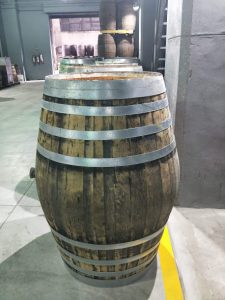
Nantou distillery receives the sherry and bourbon casks whole so that the cask maintains its inherent quality. Nantou distillery uses ex-bourbon casks up to 3 times. As for Sherry casks, there is no fixed numerical limit. Craftsmen will keep utilising the sherry cask until they deem it to be too exhausted to provide flavour. According to the tour guide, the sherry casks usually provides stronger flavours in Nantou’s climate, therefore using refill would give a more balanced dram.
3rd and 4th fill Bourbon casks are usually used for seasoning with wines or liqueurs. This is extraordinarily creative, because a 3rd or 4th fill cask may not provide as much cask influence, but they can act as a sponge to soak up the previous liquid. This means that such a seasoned cask would deliver the flavours of the previous content without over-oaking the product. These seasoned casks are used for the various Omar whisky finishes.
Warehouse
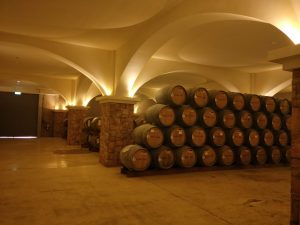
Most of Nantou distillery’s warehouses are racked for easy access to the individual cask. Amongst the racked warehouses, Nantou distillery also has a specially designed warehouse with space for future tasting events. This warehouse has an architecture heavily influenced by the sherry bodegas in Spain. The casks stacked up to three high and is a mimic of the solera system in a sherry bodega. Though the ceiling is lower, the arcs near the ceiling are similar to Bodegas in Spain. As a comparison, these are some pictures of the bodegas I visited in Jerez de la Frontera. On the left is Bodega Diez Merito, on the right is Bodega Fundador.
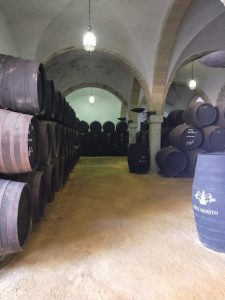
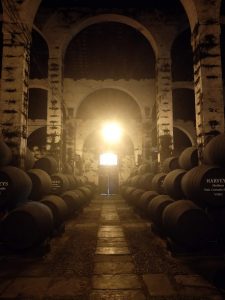
Omar is looking to expand its production capacity by adding 3 more pairs of wash and spirit stills! The distillery is also undergoing renovation to accommodate larger tour crowds. In addition, Omar is continuing to experiment with new and different finishes! It is an exciting time ahead for Omar whisky and Nantou distillery is a must go on your Taiwan trip!
Special thanks to Nantou Distillery, Chairman Chung, and Ben for this enjoyable experience!
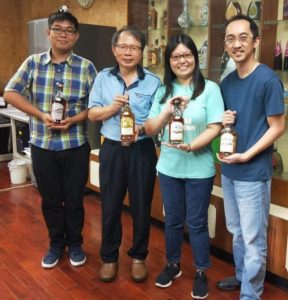
11311 Harry Hines Blvd
Dallas, TX, United States
(555) 389 976
dallas@enfold-restaurant.com
